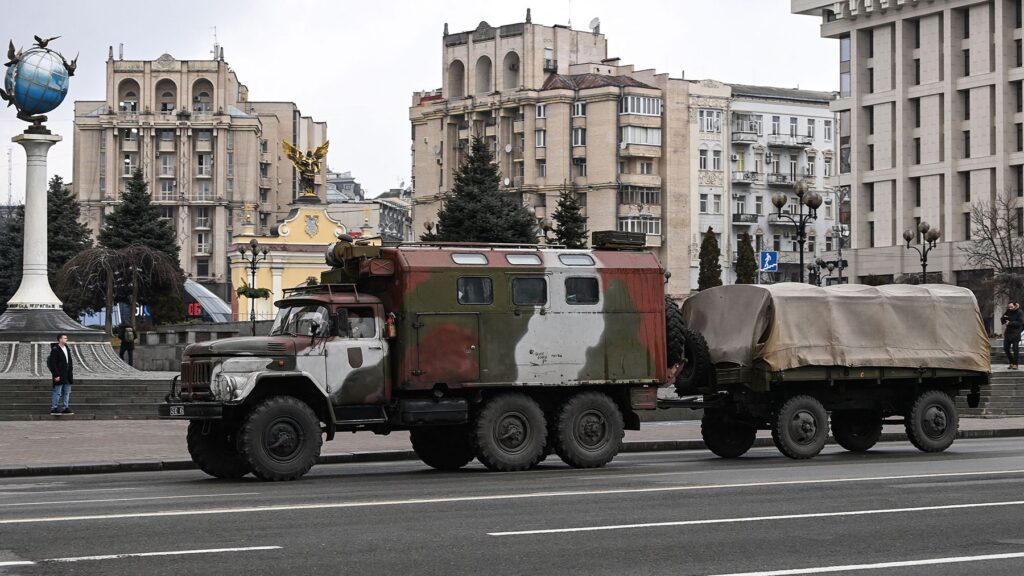Shared from www.businessoffashion.com.
Planning for War
- Russia’s invasion of Ukraine is in its second week, with attacks on civilian targets intensifying
- Nike, Mango, YNAP and other retailers have curtailed operations in Russia, citing logistical problems
- Many brands have donated to causes aiding Ukrainians, though only a few have taken a political stance
Russia’s invasion of Ukraine came as a shock to much of the world, the fashion industry included. Even the biggest brands seemed to be caught flat-footed, posting hasty messages to their websites about an inability to ship orders to Russian customers as sanctions threw the region’s logistics into chaos. This week we should begin to see some key questions answered: will more American and European brands pull out of Russia entirely? And when they do, will they cite a moral obligation, or continue to focus on operational difficulties? Will the industry be forced by customers to take a more pointed anti-Russia stand as brutal images from Ukraine circulate on social media? What will be the financial fallout?
The Bottom Line: On that last question, Adidas may provide some of our best guidance yet, as it’s reporting results this week. According to UBS, the brand is more exposed to Russia than any other fashion company it covers, generating 3 percent of sales in the country.
No Signs of Collaboration Fatigue
- Burberry is showing a collection in London on March 11
- On March 4, A$AP Nast posted an image of himself wearing Burberry X Supreme denim, the first confirmation of the rumoured collaboration
- Jonathan Akeroyd will take over as Burberry’s CEO later this month
March is a big month for Burberry. The brand is staging a fashion show, in London but off schedule. Its new CEO is due to start work. And a much-rumoured collaboration with Supreme appears close to launch. The collaboration, seen only in an image posted to A$AP Nast’s Instagram, would come at a pivotal moment for both brands. Supreme recent named a new creative director, Tremaine Emory, and its corporate parent VF Corp. has big aspirations for the brand, projecting $600 million in sales this year. A collection with Burberry would certainly help meet that goal. For Burberry, a Supreme collaboration feels like a natural progression. Under Ricardo Tisci, Burberry has embraced streetwear and regular drops, as well as a robust presence on social media (the label was one of the first luxury brands to establish itself on TikTok, and has built a strong following there).
The Bottom Line: Burberry is in a better place than it was a year or two ago, but hasn’t experienced quite the same pandemic bump as its bigger rivals and is still weaning itself off of its reliance on off-price to drive sales. A Supreme drop that sells out – and at full price – would help kickstart the next phase in the brand’s turnaround.
Waiting for Profits
- The resale platform ThredUp reports fourth-quarter and full-year results on Mar. 7
- Like The RealReal, which reported earnings in February, ThredUp’s sales have grown quickly but it remains unprofitable
- Investors are increasingly sceptical that secondhand and rental start-ups can make the economics work
Consumers love secondhand clothes. So why is it so hard to sell them profitably? Last month, shares in The RealReal spiked after the luxury reseller said it was on track for profitability — in 2024. This was considered good news by the category’s standards — resale companies have seen explosive growth but at heavy cost. Next up is ThredUp, a Canadian secondhand platform focused on more affordable items. The problem facing these companies is that collecting, evaluating and reselling used apparel is expensive, and those costs have not gone down as much as hoped as these businesses have scaled. Factor in growing competition (online and off), a labour shortage and rising customer acquisition expenses (particularly in the wake of Apple’s privacy changes), and the outlook dims further. There are reasons for optimism though: higher prices in stores should drive more consumers to try out thrifting.
The Bottom Line: While the pessimists are looking more right by the day when it comes to rental, it’s still early days for resale. As big as the secondhand market has become, it’s still growing rapidly and has reached only a small fraction of the overall apparel category.
The Week Ahead wants to hear from you! Send tips, suggestions, complaints and compliments to brian.baskin@businessoffashion.com.
Join BoF Professional to get access to the exclusive insight and analysis that keeps you ahead of the competition. Subscribe to BoF Professional here.
Images and Article from www.businessoffashion.com

